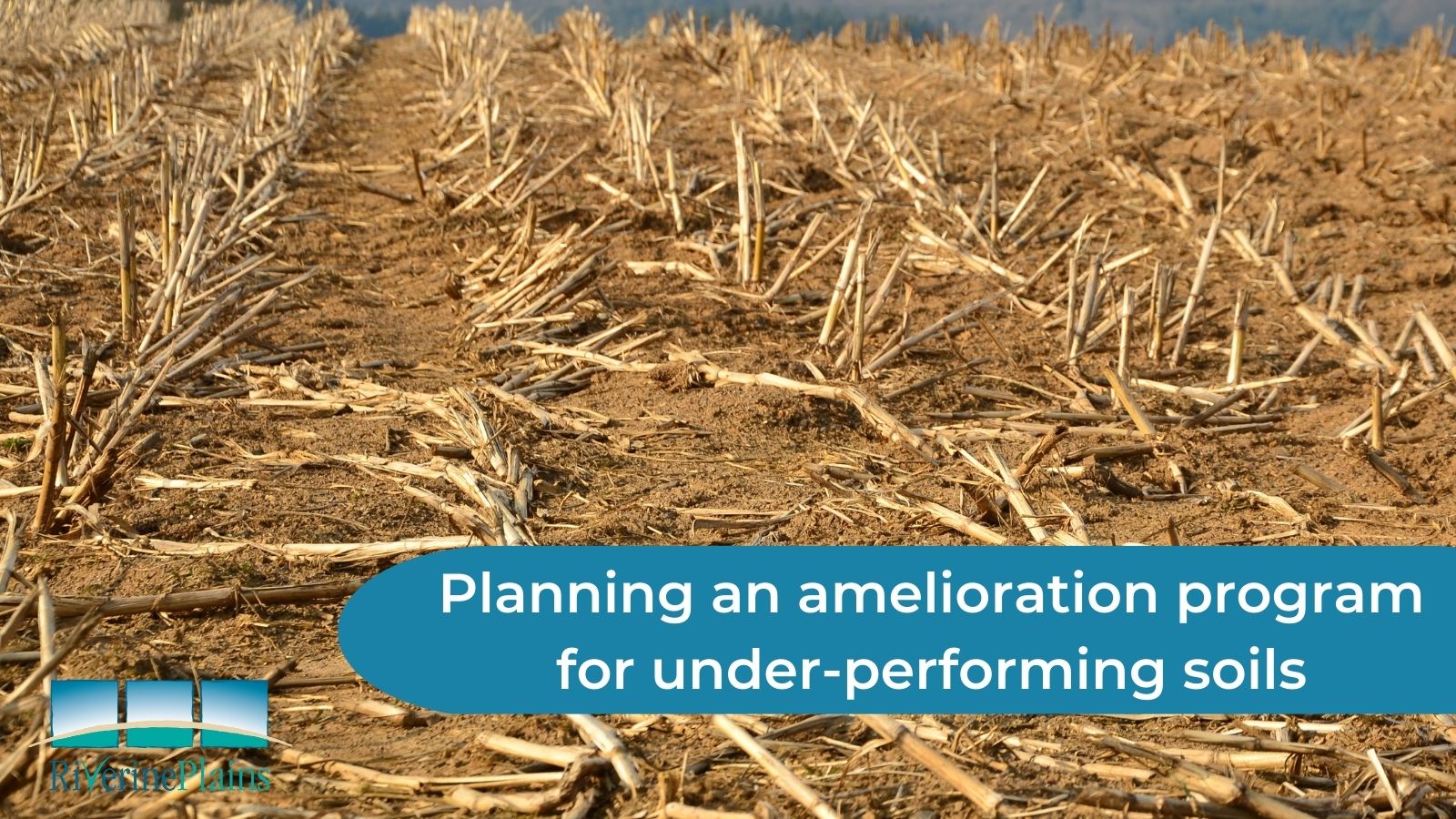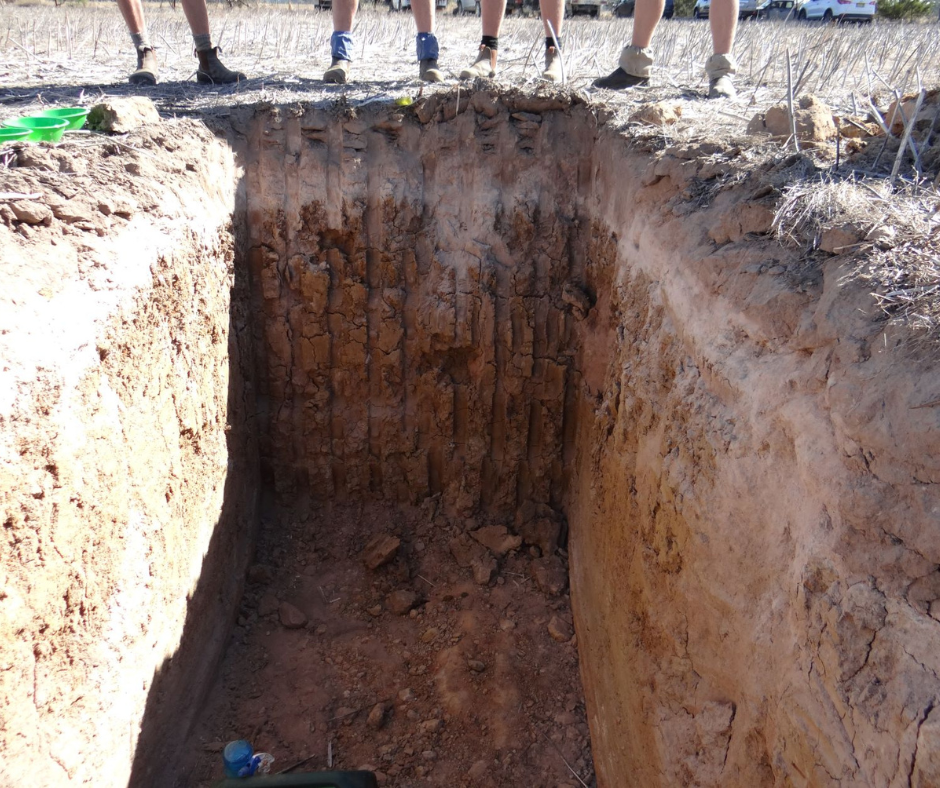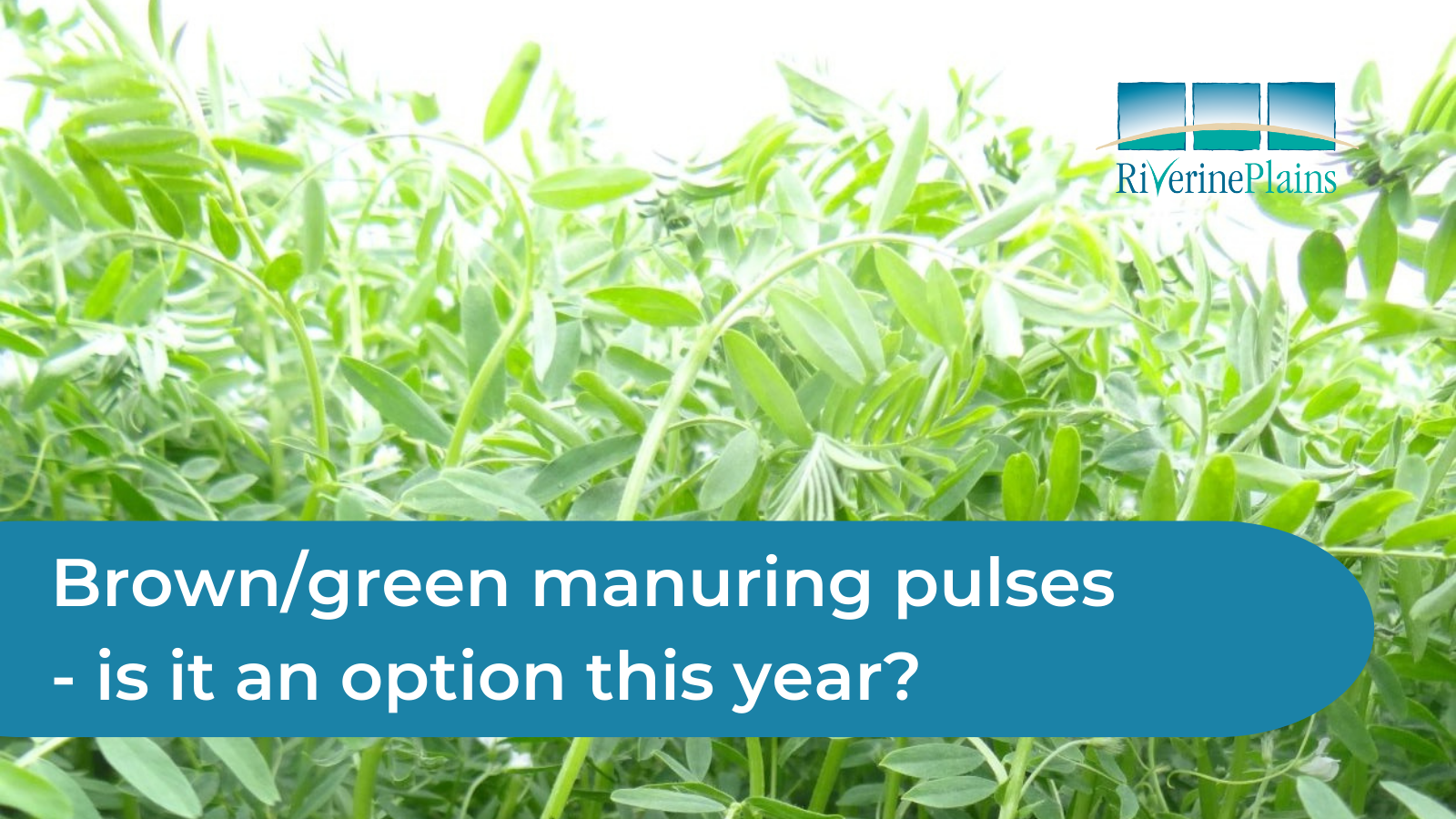Are your soils under-performing?

Key messages
- Understanding the scale and depth of soil constraints is key to an effective amelioration program
- Incremental sampling to depth provides more information than traditional 0-10 cm tests
- Seek advice before beginning an amelioration program
Summer and early autumn provides an opportunity for Riverine Plains farmers to treat soil constraints, such as acidity and sodicity, between winter crops.
So, what are the issues to consider?
Acidity
Extensive soil testing across the region has shown that surface-applied lime is reducing acidity in the top 1– 5 cm but is not moving to the 5–20 cm zone. In addition, application rates are often not sufficient to replace what is being removed by the harvesting of crops and hay, or grazing. As such, it’s recommended that farmers review their soil testing and lime application methods.
A soil pHCaCl of 4.8 and below will reduce establishment, severely constrain root growth, affect water and nutrient uptake and limit crop choice (many pulses will not grow well in soils below pH 5.2). Aluminium toxicity to plants is also typically worse in acid soils.
In a good season, acid soils might not be noticeable as plants will still be able to extract water and nutrients from the topsoil. However, in very dry or wet years, acidity can significantly impact biomass production and yield potential.
If your yields were significantly lower than expected this harvest (after considering the significant impact of flooding or disease), then it might be worth determining if soil acidity is a possible cause.
Sodic soils
Sodicity is caused by high levels of sodium relative to other cations. Sodic layers are often found at depth in the Riverine Plains, and may be located below an acid layer, making them tricky to rectify. When the exchangeable sodium percentage (ESP) is > 6, structural problems begin to occur, (ESP measures the proportion of cation exchange sites occupied by sodium).
Sodicity leads soil aggregates to collapse and disperse when wet and causes soil structure to break down. This decreases gas exchange in the rootzone and may restrict water and nutrient uptake by plants under waterlogged conditions. When dry, sodic soils set hard, inhibiting emergence, slowing root growth and increasing run-off.
To test if a soil is sodic, place small air-dry aggregates in rain or de-ionised water and check after 10 minutes, then again at two and 24 hours. If the water becomes cloudy, this indicates a dispersive soil that will likely respond to gypsum.
Soil testing – getting an accurate picture
While traditional 0-10 cm testing will identify topsoil constraints, incremented sampling from 5 cm to at least 20 cm is recommended to identify subsurface issues. For a more comprehensive picture, take incremented samples to 60 cm (i.e. 0–5 cm increments to 20 cm, then additional 20–30 cm increments down to 60 cm). This will pinpoint if and where a problem exists at depth and help determine the best amelioration strategy.
Paddocks are not always uniform, so averaged paddock samples can be misleading. For this reason, using pH or grid mapping can give more information, while also informing variable rate applications that target specific areas based on need (or used to lift whole paddock pH to a specified level, i.e pH 5.2). Avoid known problem patches within a paddock when soil testing, as this will skew results. Underperforming patches need to be treated separately to the paddock as a whole (and further highlights how grid sampling can be valuable in providing a picture of the entire paddock).
Soil testing can be done at any time of year, but it is important that repeat sampling is completed at the same time each year due to changes in soil pH, microbial activity and nutrient mobility. Repeat tests should be taken from the same area of the paddock to monitor changes over time.
Lime
Lime is only slightly soluble and takes a long time to dissolve. When it dissolves, it produces alkali ions which can neutralise acidic ions, however these alkali ions may only move down 1–3 cm/year, if not consumed in the surface soil. This is why unincorporated lime can take five years or more to neutralise acidity beyond 10 cm. It is also important to ensure enough lime is applied so it can move beyond the topsoil and down the profile. The effectiveness of lime application also depends on the neutralising value of the lime, soil type, pH buffering capacity and rainfall.
Where surface acidity is present, broadcast lime may be sufficient. Where sub-surface acidity is problematic, a shallow incorporation may be effective. For acidity at depth, deep placement of ameliorants may be an option, but this requires an understanding of potential issues (i.e clay layers that should not be disturbed) and specialised equipment. Before beginning any incorporation strategy, seek advice from an experienced advisor.
Gypsum
Gypsum has two different effects on sodicity — a short-term (salt) effect at the surface and a longer-term effect through the profile.
As gypsum dissolves, it increases the salinity of the soil solution, which suppresses dispersion. This quickly improves soil structure at the surface and improves infiltration and establishment. Once the gypsum has dissolved and leached, the soil is at risk of sealing and hard-setting again (often by about the third season, depending on rainfall and the rate applied). This means that regular gypsum applications are necessary.
Over the long-term, the calcium in gypsum can replace sodium on soil particles, which helps improve soil structure. Displacing sodium with calcium requires much higher gypsum rates than that applied for surface effect; this may be uneconomical in the short-term and can lead to salt damage if applied all at once.
It can be tricky to get gypsum to depth when subsoil sodicity is the problem, as disturbing sodic soil can make the problem worse.
Applying 2–3 t/ha of gypsum every two to three years can help manage sodicity through the salt effect and can potentially displace sodium with calcium in the subsoil in the longer term.
Planning
It takes time to develop an amelioration program (for sampling, analysis, interpretation, application planning, equipment, application logistics). If your soils are under-performing, consider a comprehensive soil testing program this season and take advantage of next year’s summer amelioration window.
Soil rehabilitation and remediation after flooding and waterlogging will be one of the topics discussed at the upcoming Members Only Preliminary Results Breakfasts hosted by Riverine Plains at Rand (21 February), Burramine (22 February) and Murchison (23 February, 2023). More information about these events is available from https://riverineplains.org.au/
Get involved in local soils projects and discussion groups
Riverine Plains is currently involved in a number of projects looking at managing soil constraints. This includes the Soil Extension project, the Improving Soil to Optimise water on-farm project, the GRDC Best Practice Liming Project and the Cool Soil Initiative. Learn more about these projects or how to join a local discussion group via the highlighted links.
Farmers can also hear more about liming in this short video by Dr Bill Slattery https://youtu.be/7p9gf7gY5DY and read about Riverine Plains’ member Curt Severin’s experience of managing acidity.
Sources and Further reading
https://www.agric.wa.gov.au/dispersive-and-sodic-soils/identifying-dispersive-sodic-soils


